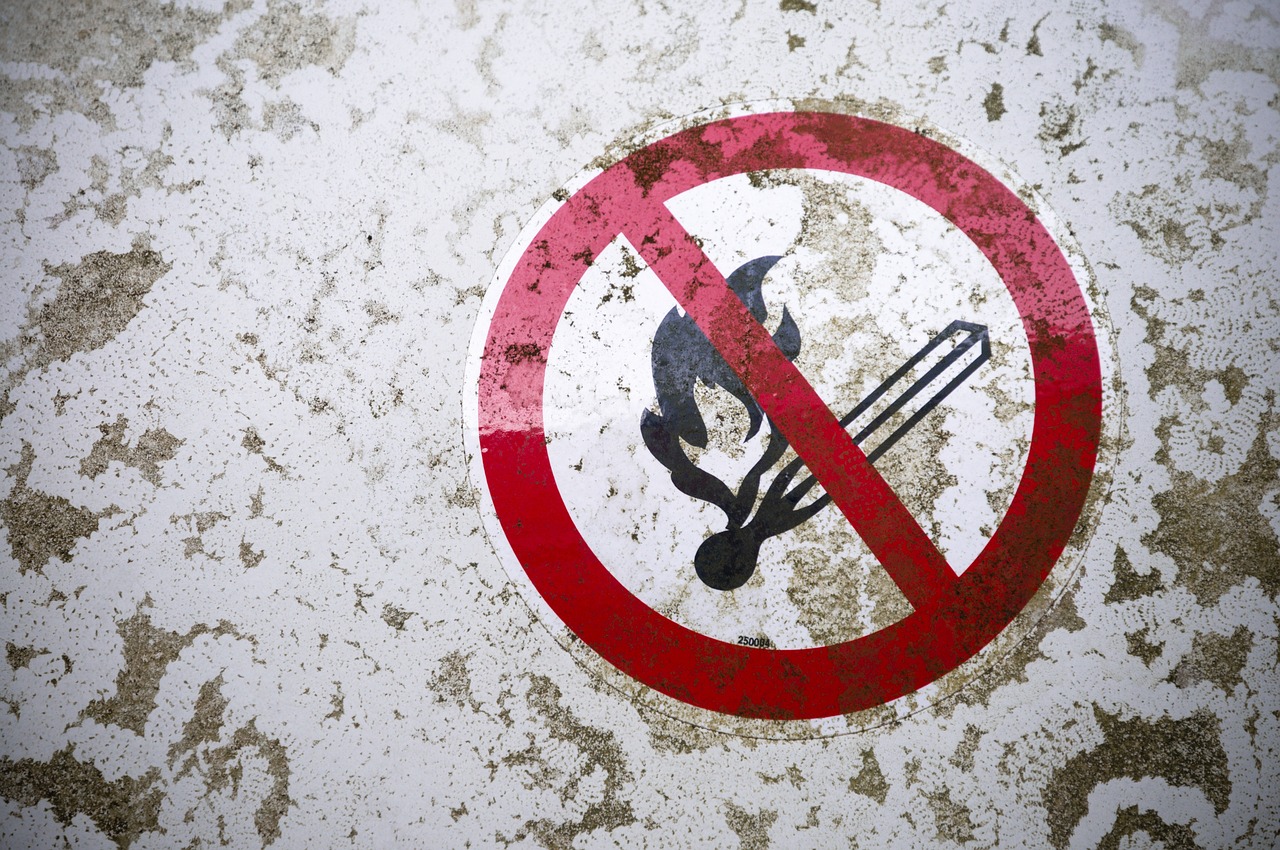Safety and Human Behavior - A Complex Connection
In our everyday lives, the concept of safety often intertwines deeply with human behavior. It's not just about wearing a hard hat on a construction site or buckling a seatbelt in a car; it’s a complex interplay of psychological, social, and environmental factors that influence how we perceive and act upon safety measures. Have you ever wondered why some people seem to take safety seriously while others disregard it entirely? This article takes a closer look at the intricate relationship between safety and human behavior, exploring the various elements that shape our safety practices across different contexts.
At its core, safety is about creating an environment where individuals feel secure and protected from harm. However, this sense of security is often subjective and can vary greatly from person to person. For instance, consider the difference between someone who has experienced a workplace accident and someone who has not. The former may approach safety protocols with heightened caution, while the latter might underestimate risks. This discrepancy highlights the importance of understanding the psychological aspects of safety.
Moreover, the social dynamics at play can further complicate our relationship with safety. Peer pressure, group norms, and cultural values can all sway individual decisions regarding safety practices. In a workplace setting, for example, if the majority of employees view safety protocols as mere formalities, it can create a culture where safety is compromised. Thus, it becomes essential to examine how these social influences shape our behaviors and attitudes toward safety.
In this article, we will delve into these multifaceted connections, providing insights into how organizations can harness this understanding to foster a safer environment. By exploring the psychological and social underpinnings of safety, as well as the environmental factors that impact our behaviors, we can uncover strategies that not only enhance safety compliance but also promote a culture of safety that resonates with every individual.

The Psychology of Safety
Understanding the psychological aspects of safety is crucial for organizations aiming to cultivate a safe environment. At its core, safety is not merely about rules and regulations; it's deeply intertwined with human emotions, beliefs, and perceptions. When we think about safety, we often overlook how our attitudes and beliefs shape our behaviors. For instance, if an employee believes that safety protocols are unnecessary, they are less likely to adhere to them. This mindset can stem from a variety of factors, including past experiences, workplace culture, and even personal values.
Moreover, the perception of risk plays a pivotal role in safety behavior. People tend to underestimate risks they are familiar with, leading to a false sense of security. This phenomenon can be likened to a seasoned driver who feels invincible behind the wheel, ignoring the potential dangers of distracted driving. On the other hand, individuals may overestimate risks in unfamiliar situations, resulting in excessive caution that can hinder productivity. Understanding this duality is essential for organizations looking to implement effective safety programs.
To illustrate the psychological factors at play, consider the following elements:
- Fear of Consequences: Fear can be a powerful motivator for safe behavior. Employees who understand the potential consequences of unsafe actions are more likely to adhere to safety protocols.
- Social Norms: The behaviors of peers can influence individual safety practices. If safety is prioritized within a team, individuals are more likely to follow suit.
- Past Experiences: An individual’s history with safety incidents can shape their current behavior. Someone who has experienced a workplace accident may become more vigilant than someone who has never faced such a situation.
It's also essential to recognize the role of emotional intelligence in safety. Employees who can manage their emotions effectively are better equipped to handle stress and make rational decisions in high-pressure situations. This emotional resilience can lead to better adherence to safety practices and a more proactive approach to risk management.
Ultimately, organizations must prioritize psychological safety alongside physical safety. Creating an environment where employees feel comfortable voicing concerns and reporting unsafe conditions is vital. This can be achieved through open communication channels and a culture that encourages feedback. When employees feel safe to express their thoughts, it fosters a collective responsibility for safety that transcends individual actions.
In conclusion, the psychology of safety is a multifaceted issue that requires a deep understanding of human behavior. By addressing the psychological barriers to safe practices, organizations can create a more robust safety culture that not only complies with regulations but also genuinely protects their workforce.

Social Influences on Safety Behavior
When we think about safety, it’s easy to imagine rules and regulations, but have you ever considered how much our social environment shapes our safety behaviors? The truth is, our decisions about safety are often influenced by the people around us. Whether we realize it or not, social dynamics play a crucial role in how we perceive risks and adhere to safety protocols. Imagine walking into a workplace where everyone is wearing safety gear. You’re likely to follow suit, right? This phenomenon is known as social conformity, and it can either enhance or undermine safety practices.
Peer pressure is a powerful force. It can motivate individuals to act safely or, conversely, lead them to take unnecessary risks. For example, in a construction site, if a group of workers decides to skip wearing helmets because "it's not that dangerous," an individual might feel compelled to join in, even if they know better. This behavior highlights how group norms can dictate actions, often overshadowing personal judgment. A study conducted by the National Safety Council found that individuals are 50% more likely to engage in unsafe behavior if their peers do the same. Isn't that a staggering statistic?
Furthermore, cultural values can significantly impact safety behavior. In some cultures, there may be a strong emphasis on hierarchy, where employees feel hesitant to speak up about unsafe conditions or practices. This silence can lead to a dangerous environment where risks are overlooked. On the other hand, cultures that promote open communication and feedback tend to foster safer workplaces. It’s all about creating an environment where everyone feels empowered to voice their concerns without fear of retribution.
Group dynamics can significantly influence safety behavior in workplace settings. When teams work closely together, their collective attitude towards safety can either uplift or degrade safety standards. For instance, in a cohesive team where communication flows freely, members are more likely to share safety concerns and best practices. In contrast, a team that lacks trust may see individuals taking risks to avoid standing out or appearing weak. This highlights the importance of team cohesion and the need for effective communication strategies in promoting a safety-first culture.
Leadership styles can directly affect safety culture within organizations. Leaders set the tone for safety practices, and their behavior often trickles down to their teams. A leader who prioritizes safety and leads by example can inspire their team to adopt similar attitudes. For instance, if a manager consistently wears safety gear and encourages employees to report hazards, it cultivates a proactive safety environment. Conversely, if leaders neglect safety protocols, it sends a message that safety is not a priority, leading to a culture of complacency. Therefore, effective communication and support from leadership are essential in fostering a robust safety culture.
Peer relationships can either promote or undermine safety practices. Positive peer interactions, where individuals encourage each other to adhere to safety protocols, can enhance overall safety behavior. This is particularly important in high-risk environments where the consequences of unsafe actions can be dire. Encouraging a culture of accountability, where team members feel responsible for one another’s safety, can create a strong support system. On the flip side, negative peer influence can lead to risky behaviors. It’s crucial to recognize these dynamics and work towards fostering a supportive community that prioritizes safety.
In conclusion, the social context surrounding safety behaviors is intricate and multifaceted. By understanding how social influences—whether from peers, group dynamics, or leadership—impact safety practices, organizations can develop strategies to enhance their safety culture. It’s not just about having the right policies in place; it’s about cultivating an environment where safety is a shared responsibility, and everyone feels empowered to contribute.
- How can organizations improve their safety culture? Organizations can improve their safety culture by promoting open communication, encouraging employee involvement in safety decisions, and providing regular training and resources.
- What role does leadership play in safety behavior? Leadership plays a critical role by setting a positive example, communicating the importance of safety, and fostering an environment where employees feel comfortable reporting hazards.
- How can peer pressure affect safety practices? Peer pressure can lead individuals to conform to unsafe behaviors if their peers engage in risky actions, highlighting the importance of fostering positive peer interactions.

Group Dynamics in Safety
When we think about safety, it’s easy to focus on individual actions and decisions. However, group dynamics play a crucial role in shaping how safety is perceived and practiced within teams. Imagine a workplace where everyone feels responsible for their own safety, but also for the safety of their colleagues. This collective mindset can significantly enhance overall safety outcomes. But what exactly influences this group mentality?
Group dynamics encompass the interactions and relationships between team members, which can either promote a strong safety culture or lead to risky behaviors. For instance, when team members communicate openly about safety concerns, it fosters an environment where everyone feels empowered to speak up. Conversely, if a few members consistently disregard safety protocols, it can create a ripple effect, leading others to follow suit. This phenomenon is often referred to as social contagion, where behaviors spread through a group like wildfire.
To illustrate, let’s consider a manufacturing plant. If the majority of workers prioritize safety and adhere to protocols, it sets a standard that others are likely to follow. On the other hand, if a small group frequently skips safety measures without facing consequences, it can lead to a culture of complacency. In this scenario, the potential for accidents increases, as employees may feel pressured to conform to unsafe practices rather than voice their concerns.
One of the most critical aspects of group dynamics in safety is team cohesion. A cohesive team is more likely to support one another in adhering to safety practices. When team members trust each other and have strong interpersonal relationships, they are more inclined to communicate openly about risks and encourage safe behaviors. This trust can be cultivated through regular safety meetings, team-building exercises, and creating an atmosphere where everyone feels valued.
Additionally, effective communication within a team cannot be overstated. Teams that engage in clear and consistent communication about safety protocols are better equipped to handle potential hazards. For example, utilizing tools like safety checklists or digital platforms for reporting safety issues can enhance transparency and accountability. Here’s a simple table that highlights the key elements of effective group dynamics in safety:
| Element | Description |
|---|---|
| Communication | Open dialogue about safety concerns and protocols. |
| Trust | Building strong interpersonal relationships among team members. |
| Support | Encouraging one another to adhere to safety practices. |
| Accountability | Ensuring everyone takes responsibility for safety. |
In conclusion, the dynamics of a group significantly impact safety behaviors in any environment. By fostering a culture of trust, open communication, and accountability, organizations can enhance their safety practices and reduce the risk of accidents. It’s not just about individual actions; it’s about how those actions are influenced by the group. So, the next time you think about safety, remember that it’s a collective effort that requires everyone’s participation.
- What are group dynamics? Group dynamics refer to the interactions and relationships between members of a group, influencing behavior and decision-making.
- How do group dynamics affect safety? Positive group dynamics can promote adherence to safety protocols, while negative dynamics can lead to risky behaviors.
- What can organizations do to improve group dynamics for safety? Organizations can improve group dynamics by fostering open communication, building trust, and encouraging accountability among team members.

The Role of Leadership
Leadership plays a pivotal role in shaping the safety culture within any organization. When we think about safety, we often focus on policies and procedures, but the truth is that effective leadership can make or break safety initiatives. Leaders set the tone for how safety is perceived and prioritized. They are the ones who can either inspire their teams to embrace a culture of safety or allow it to become an afterthought. Think of leadership as the compass guiding a ship through turbulent waters—without a steady hand at the helm, the journey can become perilous.
One of the most important aspects of leadership in safety is communication. Leaders must communicate not just the rules and regulations but also the underlying reasons for these safety measures. When team members understand the “why” behind safety protocols, they are more likely to adhere to them. This involves not just talking at people, but engaging in meaningful conversations that encourage feedback and openness. A leader who listens is a leader who fosters trust, and trust is the bedrock of a safe working environment.
Moreover, leaders should model safe behavior themselves. It’s one thing to tell employees to wear their helmets or follow safety protocols, but it’s another to see their leaders doing the same. When leaders practice what they preach, they reinforce the importance of safety through their actions. This creates a ripple effect, encouraging employees to take safety seriously. A leader’s commitment to safety can be illustrated through their actions in the following ways:
- Participating in safety training: When leaders take part in training sessions, it shows that safety is a priority for everyone, regardless of rank.
- Conducting regular safety audits: Leaders who actively engage in safety assessments demonstrate their commitment to maintaining a safe environment.
- Recognizing safe behavior: Acknowledging and rewarding employees for following safety protocols can motivate others to do the same.
Additionally, the leadership style adopted by an organization can greatly influence its safety culture. For instance, a transformational leader who encourages innovation and collaboration can foster an environment where safety is continuously improved. In contrast, an authoritarian leader who strictly enforces rules without seeking input can lead to resentment and non-compliance. Thus, leaders should strive to be approachable and supportive, creating an atmosphere where everyone feels responsible for safety.
To sum it up, the role of leadership in promoting safety cannot be overstated. Leaders not only establish the safety standards but also create a culture that values and prioritizes safety at every level. By communicating effectively, modeling safe behavior, and adopting a positive leadership style, they can significantly enhance the safety of their teams. After all, a safe workplace is not just about following rules; it’s about creating an environment where everyone feels empowered to contribute to safety efforts.
Q: How can leaders effectively communicate safety policies?
A: Leaders should engage in open dialogues, provide clear explanations, and encourage feedback from employees to foster understanding and compliance.
Q: What is the impact of leadership style on safety culture?
A: Leadership style can either promote a positive safety culture through collaboration and support or hinder it through strict enforcement and lack of engagement.
Q: How can leaders encourage employees to prioritize safety?
A: By modeling safe behaviors, recognizing safe practices, and involving employees in safety discussions, leaders can motivate their teams to prioritize safety.

Peer Influence
Peer influence is a powerful force that can significantly shape safety behaviors in various contexts, particularly in workplace environments. When individuals are surrounded by colleagues who prioritize safety, they are more likely to adopt similar attitudes and practices. This phenomenon occurs because humans are inherently social beings, and we often look to those around us for cues on how to behave. For instance, if an employee observes their coworkers consistently using safety gear and following protocols, they are more inclined to do the same. Conversely, if they see peers neglecting safety measures, it can create a perception that these practices are less important, leading to increased risk-taking behaviors.
Moreover, the dynamics of peer relationships can either bolster or undermine safety practices. Positive peer interactions can foster a culture of safety where individuals feel supported in their efforts to adhere to safety protocols. This support can manifest in various ways, such as:
- Encouragement to report unsafe conditions or behaviors.
- Sharing knowledge about safety practices and procedures.
- Collaborative problem-solving to address safety challenges.
On the flip side, negative peer pressure can lead to complacency or even dangerous behaviors. For example, if an employee feels pressured to ignore safety protocols to fit in with a group, the consequences can be dire, not just for themselves but for their entire team. This highlights the importance of fostering a positive peer environment where safety is a shared value rather than an individual responsibility.
To effectively harness the power of peer influence, organizations need to actively promote a culture of safety. This can be achieved through:
- Regular training sessions that emphasize the importance of safety and collective responsibility.
- Creating opportunities for team-building activities that reinforce safety values.
- Recognizing and rewarding safe behaviors among employees to encourage others to follow suit.
In conclusion, peer influence is a double-edged sword in the realm of safety. By understanding and leveraging this influence, organizations can create an environment where safety is not just a set of rules to follow, but a shared commitment among all employees. It’s about creating a community where everyone looks out for one another, ensuring that safety becomes second nature in every action taken.
Q: How can organizations measure the impact of peer influence on safety behavior?
A: Organizations can utilize surveys and feedback mechanisms to assess employees' perceptions of safety culture and peer behaviors. Analyzing incident reports and safety compliance rates before and after implementing peer-focused initiatives can also provide valuable insights.
Q: What are some effective strategies to promote positive peer influence?
A: Strategies include implementing mentorship programs, encouraging open discussions about safety, and recognizing teams that demonstrate exemplary safety practices. Creating a supportive environment where employees feel comfortable discussing safety concerns is also crucial.
Q: Can peer influence be negative, and how can organizations mitigate this?
A: Yes, negative peer influence can lead to unsafe behaviors. Organizations can mitigate this by addressing negative behaviors promptly, providing clear safety training, and fostering a culture that rewards positive safety practices.

Individual Factors Affecting Safety
When we talk about safety, it’s easy to think of external factors like equipment or policies, but the individual factors that shape our behavior are just as crucial. Each person's unique characteristics—such as personality traits, past experiences, and even emotional states—can significantly impact their approach to safety. For instance, consider the difference between someone who is naturally cautious and someone who is more impulsive. The cautious individual may take the time to double-check safety protocols, while the impulsive one might rush through tasks, increasing the risk of accidents. This variance in behavior can often be traced back to their individual backgrounds and psychological makeup.
Moreover, past experiences play a pivotal role in shaping how we perceive risk. If an individual has previously been involved in a safety incident, they are likely to develop a heightened sense of awareness regarding safety measures in the future. On the other hand, someone who has never experienced a safety-related incident might underestimate the importance of following safety guidelines. This phenomenon can lead to a dangerous complacency that not only affects the individual but can also influence their coworkers.
Another important aspect is the emotional state of an individual. Stress, anxiety, and fatigue can cloud judgment and lead to poor decision-making. For example, someone who is stressed out may overlook critical safety signs or fail to communicate hazards effectively to their team. Emotional intelligence plays a significant role here; individuals who can manage their emotions and remain calm under pressure are more likely to adhere to safety protocols. This is why organizations should not only focus on technical training but also on developing the emotional resilience of their employees.
In addition to these factors, cognitive biases can also affect safety behavior. For instance, the optimism bias leads individuals to believe that they are less likely to experience negative outcomes compared to others. This might cause them to take unnecessary risks, thinking that accidents won’t happen to them. Recognizing and addressing these biases can be key in fostering a culture of safety within organizations.
To sum it up, the interplay of individual factors such as personality, past experiences, emotional state, and cognitive biases can significantly influence safety behaviors. By understanding these factors, organizations can tailor their safety programs to address the unique needs of their workforce, ultimately leading to a safer working environment for everyone.
- What are the main individual factors that affect safety? Individual factors include personality traits, past experiences, emotional states, and cognitive biases.
- How does past experience influence safety behavior? Previous incidents can heighten awareness and encourage adherence to safety protocols.
- Can emotional intelligence impact safety practices? Yes, individuals with higher emotional intelligence are more likely to manage stress and make safer decisions.
- What role do cognitive biases play in safety? Cognitive biases can lead individuals to underestimate risks, influencing their safety behavior negatively.

Environmental Factors Impacting Safety
The environment in which individuals operate plays a pivotal role in shaping their safety behaviors. Think of it as the stage where the drama of safety unfolds; the setting can either enhance the performance or lead to a tragic mishap. For instance, a cluttered workspace can be a breeding ground for accidents, while a well-organized environment promotes efficiency and safety. It's essential to recognize that the physical surroundings, organizational policies, and available resources are interlinked, creating a complex web that influences safety outcomes.
One of the most significant aspects of environmental safety is the physical layout. A workspace designed with safety in mind can significantly reduce the risk of accidents. For example, ensuring that emergency exits are clearly marked and easily accessible can make all the difference in a crisis. Moreover, the use of appropriate materials and equipment tailored to the specific tasks at hand can prevent hazardous situations from arising. Ergonomic design principles should not be overlooked, as they can enhance employee well-being while minimizing the risk of injuries related to repetitive motions or improper posture.
Organizational policies also play a crucial role in shaping safety behaviors. A company that prioritizes safety through comprehensive training programs, regular safety audits, and clear communication of safety protocols fosters a culture where safety is valued. Employees are more likely to adhere to safety practices when they see that their organization is committed to creating a safe working environment. This commitment can be demonstrated through visible leadership support and the allocation of resources for safety initiatives.
Furthermore, the availability of resources such as safety equipment and technology can significantly impact safety outcomes. Organizations that invest in the latest safety technologies—like automated monitoring systems or advanced personal protective equipment—can enhance compliance and reduce risks. For instance, using real-time data to monitor environmental conditions can help identify potential hazards before they escalate into serious issues. In this way, technology acts as both a shield and a guide, steering individuals toward safer practices.
To illustrate the importance of environmental factors in safety, consider the following table that summarizes the key elements:
| Environmental Factor | Impact on Safety |
|---|---|
| Physical Layout | Minimizes hazards, enhances accessibility |
| Organizational Policies | Promotes a culture of safety, encourages compliance |
| Resource Availability | Facilitates proper safety measures, enhances preparedness |
| Technology Use | Improves monitoring, reduces human error |
In conclusion, the interplay between environmental factors and safety behaviors is undeniable. By understanding and optimizing these factors, organizations can create safer work environments that not only protect their employees but also enhance overall productivity. It's a win-win situation—when safety is prioritized, everyone benefits. So, the next time you walk into a workplace, take a moment to consider how the environment is influencing your safety behaviors. Are you in a space that encourages safety, or is it setting the stage for potential accidents?
- What are the key environmental factors that impact safety? Physical layout, organizational policies, resource availability, and technology use are crucial environmental factors affecting safety.
- How can workplace design improve safety? Effective workplace design minimizes hazards and promotes ergonomics, which can significantly reduce the risk of injuries.
- What role does technology play in enhancing safety? Technology can improve monitoring, facilitate compliance, and reduce human error, thereby enhancing overall safety measures.

Workplace Design and Safety
When we talk about workplace design, it’s easy to overlook how deeply it intertwines with safety. Imagine stepping into an office where the layout feels intuitive, the lighting is just right, and the equipment is positioned for optimal use. This isn’t just about aesthetics; it’s about creating an environment that actively promotes safety and well-being. Good workplace design can minimize hazards, reduce accidents, and enhance overall productivity. But how does this all come together?
Firstly, ergonomic design plays a crucial role in workplace safety. Ergonomics is all about creating a workspace that fits the worker, rather than forcing the worker to adapt to the workspace. For instance, adjustable chairs and desks can prevent musculoskeletal disorders, which are common in office settings. When employees are comfortable, they are less likely to engage in risky behaviors that could lead to accidents. A well-designed workspace can also include:
- Properly placed equipment to reduce strain
- Clear pathways to prevent trips and falls
- Effective signage to guide behavior and enhance awareness
Moreover, let’s not forget about the impact of natural light. Studies have shown that exposure to natural light can improve mood and energy levels, which directly correlates with increased focus and decreased errors. A workspace flooded with sunlight can reduce fatigue and enhance alertness, making it a safer environment. Additionally, well-ventilated spaces contribute to better air quality, which is essential for maintaining cognitive function and overall health.
Another critical aspect of workplace design is the layout. Open floor plans might seem trendy, but they can also lead to distractions and noise, potentially increasing the risk of accidents. On the other hand, strategically designed spaces that allow for quiet zones can help employees concentrate and reduce the likelihood of mishaps. By creating designated areas for collaboration and solitude, organizations can cater to various working styles while maintaining a focus on safety.
It’s also vital to consider how technology integrates into workplace design. With the rise of smart technology, workplaces can now monitor conditions in real-time. For instance, sensors can detect hazardous conditions, such as poor air quality or excessive noise levels, alerting employees before they become a significant risk. This proactive approach not only enhances safety but also fosters a culture of awareness among employees.
In conclusion, workplace design is not merely about aesthetics; it’s a fundamental component of safety. By prioritizing ergonomic principles, natural elements, thoughtful layouts, and smart technology, organizations can create environments that not only protect employees but also promote productivity and engagement. This holistic approach to safety in workplace design is essential for any organization aiming to cultivate a culture of safety and well-being.
- What is ergonomic design? Ergonomic design focuses on creating workspaces that fit the needs of the worker, reducing strain and the risk of injury.
- How does natural light affect workplace safety? Natural light improves mood and energy levels, which can lead to increased focus and fewer accidents.
- What role does technology play in workplace safety? Technology can monitor workplace conditions and alert employees to potential hazards, enhancing overall safety.
- Why is workplace layout important? The layout can reduce distractions and accidents by providing clear pathways and designated areas for different tasks.

Technology and Safety Enhancements
In today's fast-paced world, technology plays a pivotal role in enhancing safety across various sectors. Whether it's in construction, manufacturing, or healthcare, innovative tools and systems are transforming how we approach safety protocols. Imagine a workplace where potential hazards are identified before they become a problem—this is not just a dream, but a reality made possible by advancements in technology.
One of the most significant contributions of technology to safety is through automation. Automated systems can monitor environments in real-time, alerting personnel to potential dangers before they escalate. For instance, in a manufacturing plant, sensors can detect abnormal vibrations in machinery, signaling maintenance needs before a breakdown occurs. This proactive approach not only prevents accidents but also enhances overall operational efficiency.
Moreover, the integration of wearable technology has revolutionized personal safety measures. Devices like smart helmets and vests equipped with sensors can track workers' vital signs and environmental conditions. If a worker is exposed to hazardous levels of toxins or experiences a significant drop in heart rate, these wearables can send immediate alerts to supervisors, ensuring quick responses. It's like having a safety net that actively watches over every individual on the job.
Another technological advancement is the use of data analytics in safety management. By analyzing historical data, organizations can identify patterns and trends related to safety incidents. This information is invaluable; it allows companies to develop targeted training programs and implement specific safety measures tailored to their unique risks. For example, if data shows a spike in accidents during certain shifts, management can investigate further and adjust staffing or training accordingly.
Furthermore, the emergence of virtual reality (VR) training programs is changing the landscape of safety education. Employees can engage in immersive training simulations that replicate real-life scenarios without the associated risks. This method not only enhances knowledge retention but also builds confidence in handling potentially dangerous situations. Imagine a firefighter training in a VR environment that mimics a burning building—this experience can prepare them for the real thing far more effectively than traditional methods.
However, while technology offers numerous benefits, it is essential to remember that it is not a panacea. The effectiveness of these tools heavily relies on how well they are integrated into the existing safety culture of an organization. Employees must be trained not only to use these technologies but also to understand their importance in promoting a safe work environment. Therefore, fostering a culture that embraces technology while prioritizing safety is crucial.
In conclusion, technology is a powerful ally in enhancing safety measures across various industries. From automation and wearables to data analytics and VR training, the tools available today can significantly mitigate risks and improve compliance with safety protocols. Yet, it is the combination of these advancements with a strong safety culture that will ultimately lead to the best outcomes. As we continue to innovate, the question remains: how can we ensure that technology serves as a complement to human vigilance rather than a replacement?
- How does technology improve workplace safety?
Technology enhances workplace safety through automation, real-time monitoring, data analytics, and immersive training solutions, helping to identify and mitigate risks effectively. - What role do wearables play in safety?
Wearable devices monitor workers' health and environmental conditions, providing alerts for potential hazards, thus ensuring timely interventions. - Can virtual reality training replace traditional safety training?
While VR training offers immersive experiences that enhance learning, it should complement traditional training methods rather than replace them entirely. - Is technology enough to ensure safety?
While technology significantly contributes to safety, it must be integrated into a strong safety culture that emphasizes training, awareness, and employee engagement.
Frequently Asked Questions
- What is the connection between safety and human behavior?
The connection between safety and human behavior is complex and multifaceted. It involves understanding how psychological factors, social influences, and environmental contexts shape individuals' perceptions and actions regarding safety. By examining these elements, organizations can develop more effective safety programs that resonate with their employees.
- How do psychological aspects influence safety behavior?
Psychological aspects such as attitudes, beliefs, and perceptions play a crucial role in determining how individuals approach safety. For instance, if someone believes that safety protocols are unnecessary, they are less likely to follow them. Understanding these psychological factors allows organizations to tailor their safety initiatives to better align with employee mindsets.
- What role do social influences play in safety practices?
Social influences, including peer pressure and group norms, significantly impact safety behaviors. People often look to their peers for cues on how to behave, meaning that a strong safety culture among colleagues can enhance compliance. Conversely, negative peer influences can lead to risky behaviors, underscoring the importance of fostering a supportive social environment.
- How can leadership affect safety culture?
Leadership plays a pivotal role in shaping an organization's safety culture. Effective leaders can foster a proactive safety environment by promoting open communication, demonstrating commitment to safety, and supporting employees in adhering to safety practices. Their behavior sets the tone for the entire organization, influencing how safety is perceived and prioritized.
- What individual factors contribute to safety behavior?
Individual factors such as personality traits, past experiences, and risk perception significantly affect how people behave regarding safety. For example, someone with a cautious personality may be more diligent about following safety protocols, while someone with a more adventurous spirit might take unnecessary risks. Recognizing these individual differences is essential for tailoring safety training and interventions.
- How do environmental factors impact safety outcomes?
The environment in which individuals operate can greatly influence their safety behaviors. Factors such as workplace design, organizational policies, and available resources can either enhance or hinder safety compliance. A well-designed workspace that minimizes hazards can lead to safer behaviors, while poor design can increase the likelihood of accidents.
- What is the importance of workplace design in safety?
Effective workplace design is crucial for enhancing safety as it helps minimize hazards and promotes employee well-being. Ergonomic design principles, for instance, can reduce the risk of injuries and improve overall productivity. A thoughtfully designed workplace encourages safer behaviors and can significantly impact the health and safety of employees.
- How does technology enhance safety measures?
Advancements in technology play a vital role in improving safety measures. Tools such as automation, monitoring systems, and safety apps can provide real-time data and alerts, helping individuals adhere to safety protocols. By integrating technology into safety practices, organizations can create a more reliable and efficient safety environment.



















